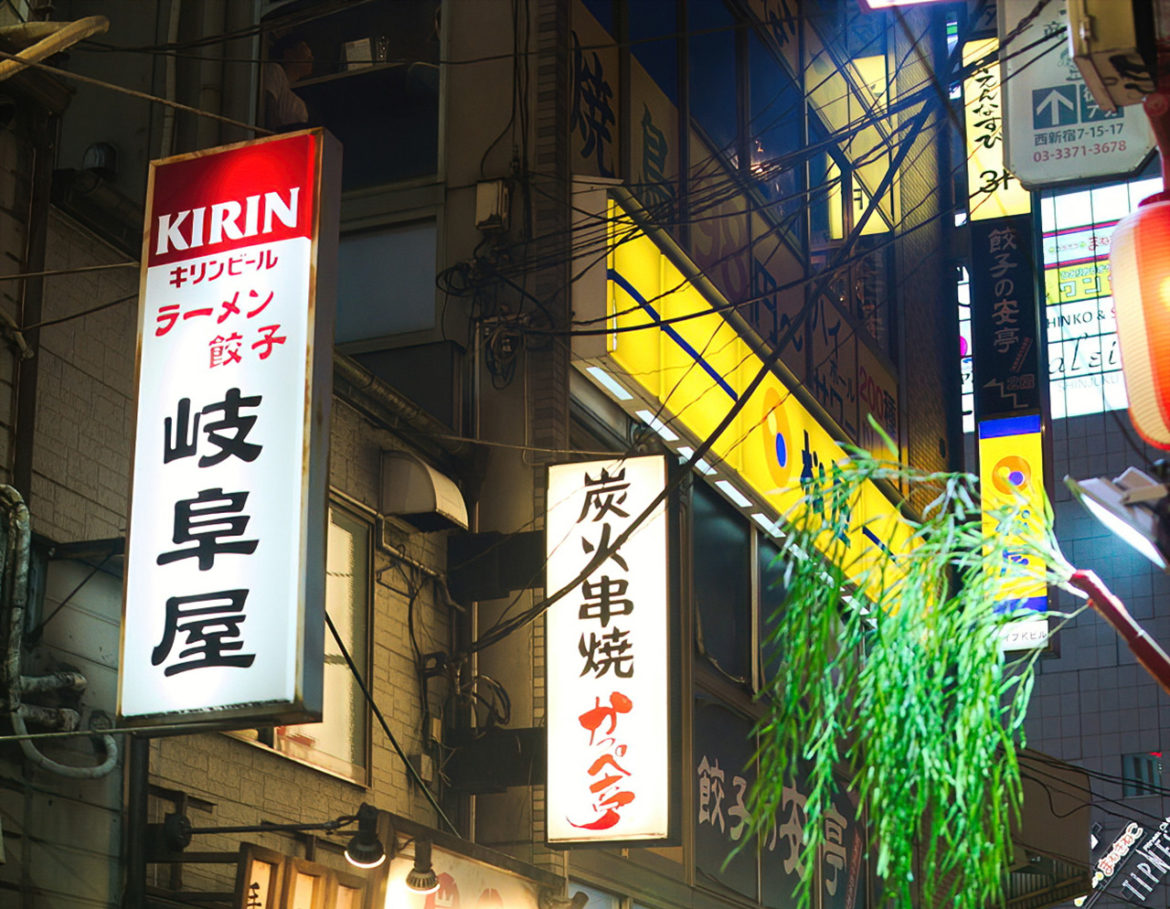By: XEONIQ [ Instagram | Tumblr ]
Shinjuku is one of Tokyo’s most populated residential wards and is home to head offices of countless Japanese corporations. It also doubles as a major nightlife hotspot and has become a tourist mecca for foreigners. I stayed there six weeks in 2018 and while it is not a place I feel I need to visit again, there is a certain charm to its aesthetic, which I’ve tried to capture in this set of night photos. Taken randomly on my evening commutes, there is no specific narrative; instead I’ll just briefly annotate each image to the best of my recollection.
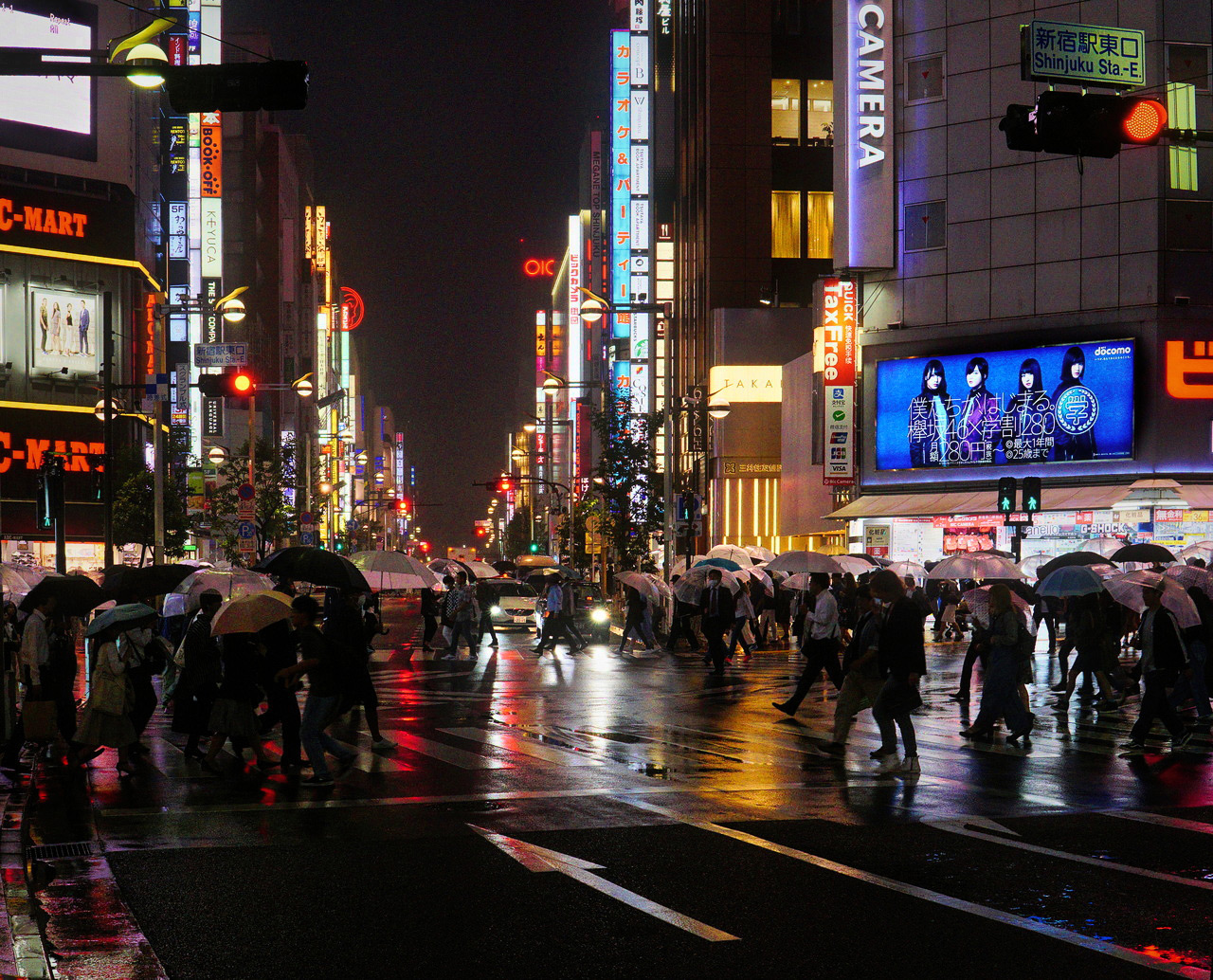
Like most foreigners, I found the cross walk scenarios in Tokyo to be a bit of a novelty. This was one of my early photos I took in Shinjuku. The neon and LED video lights reflected across the rain-slicked asphalt creating a vibrancy I found quite romantic and I could see how many tourists might be smitten by the aesthetic of the place.
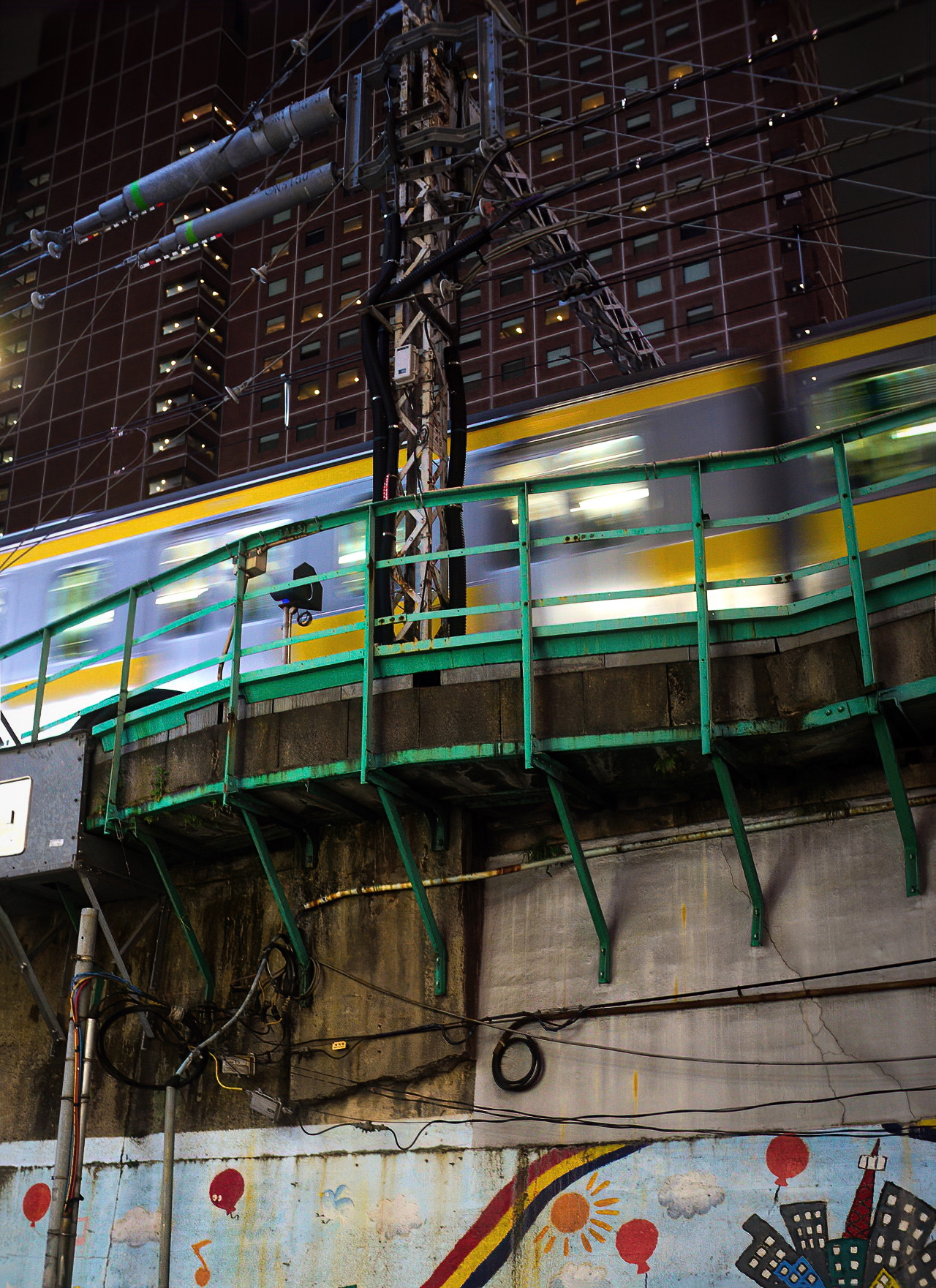
The elevated trains going in and out of Shinjuku station are quite old, and just one example of the overall grittiness of the ward. Compared to the gloss and sterility of Shibuya or Ginza, Shinjuku provides a more grimey, “textured” feel, which I personally preferred as an aesthetic.
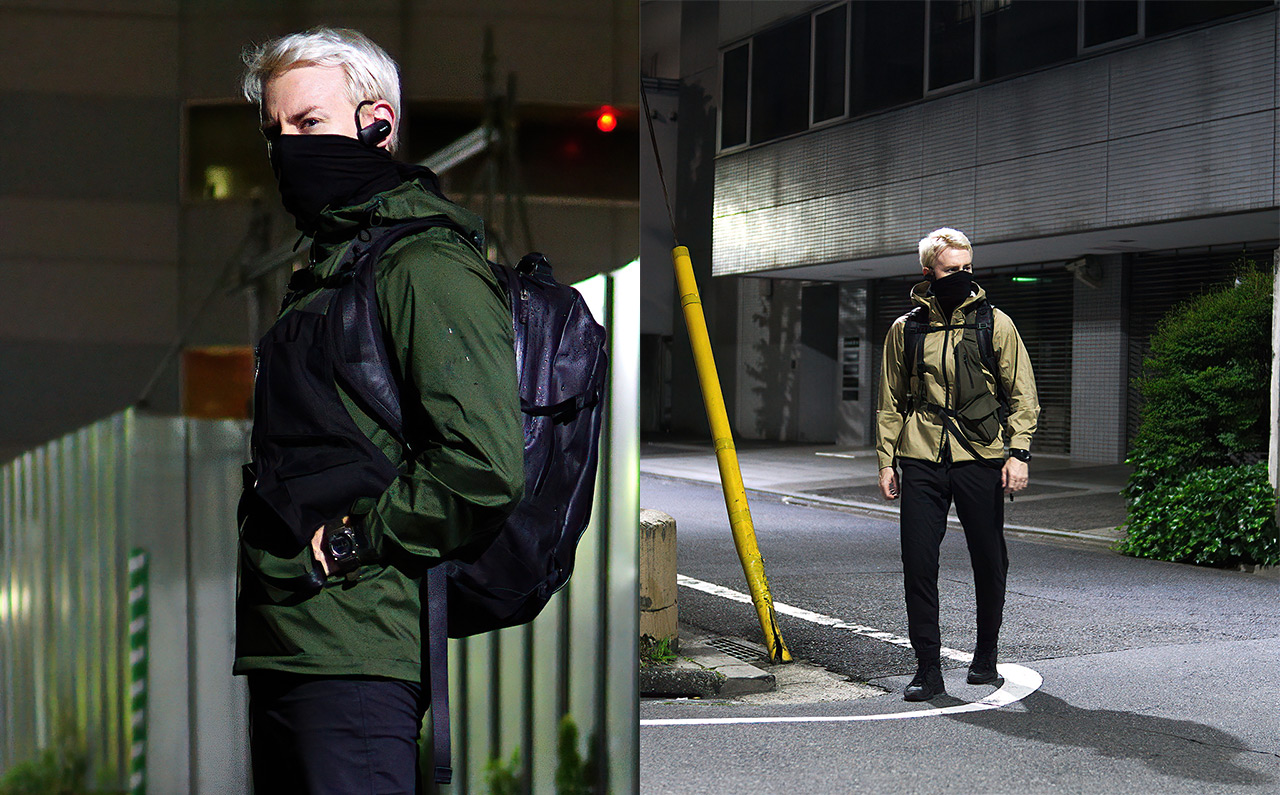
Arriving in the late spring at the onset of the summer rainy season, lightweight water resistant gear was a comfortable option. Muji stocks resin-coated Nylon shells in a few colours that ranged between $29 to $79 depending on sales and colourway. The resin-coating is meant to last 2 years but the gold shell pictured above still looks as new and is fully water-resistant. I find these Muji shells to be more comfortable than Uniqlo’s BlockTech parka and the two-way front zip and cord adjusted hood provide a more versatile fit. The pants were also from Muji: made in a synthetic blend with a DWR coating, they were as light as shorts and perfect for humid weather. One thing I enjoy about techwear is the dynamism one can build into their outfits, with looks like above being able to transform to something relatively conventional by stowing the shell and face bandana in the waterproof backpack. Looks like these provide a lot of versatility for a number of situations.
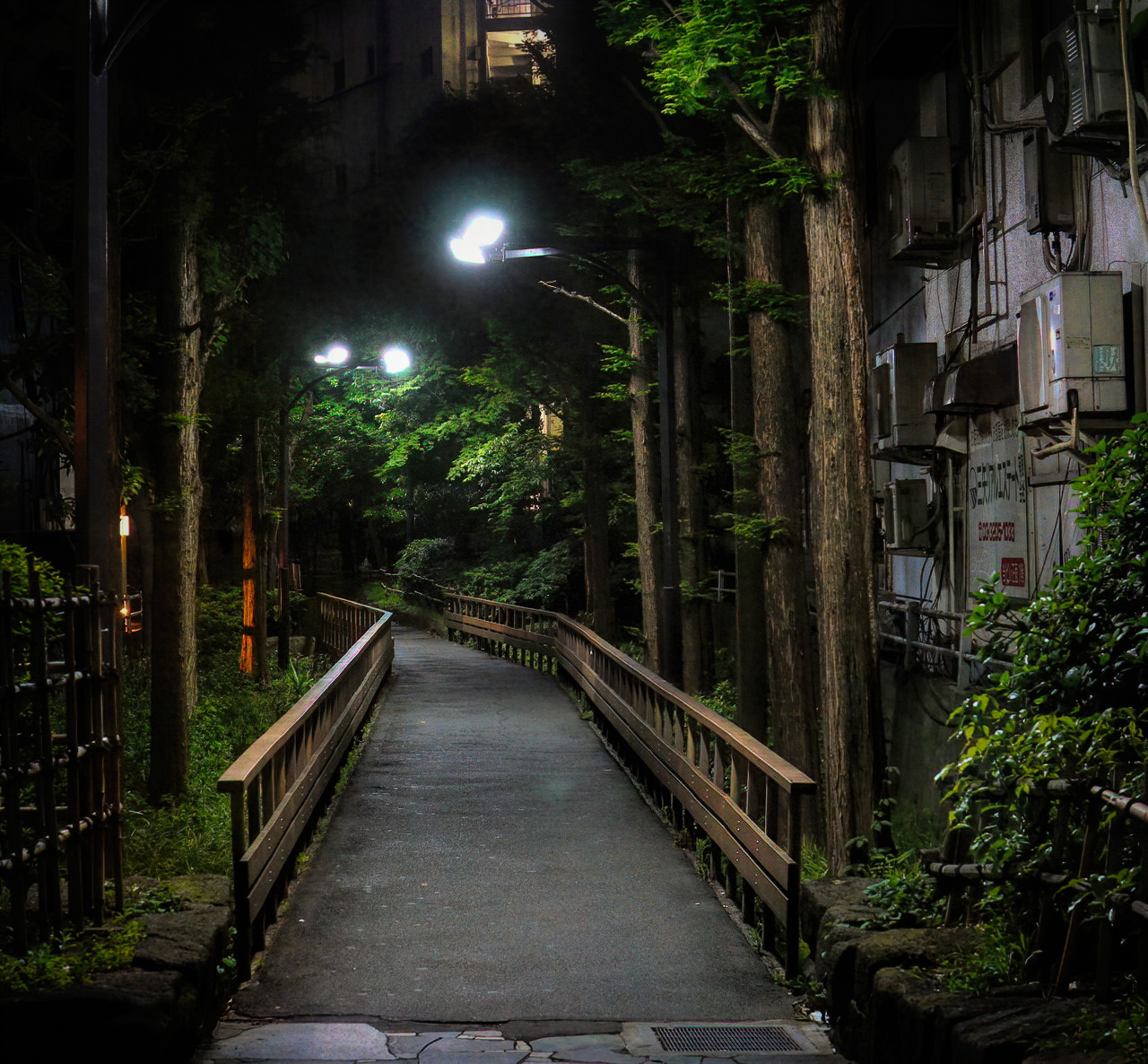
One of the popular thoroughfares that cuts through the CBD, located near the Golden Gai micro-bar district. The small touch of nature and traditional aesthetics in an otherwise heavily urbanised space broke up the somewhat endless sprawl of low rise commercial buildings and cement.
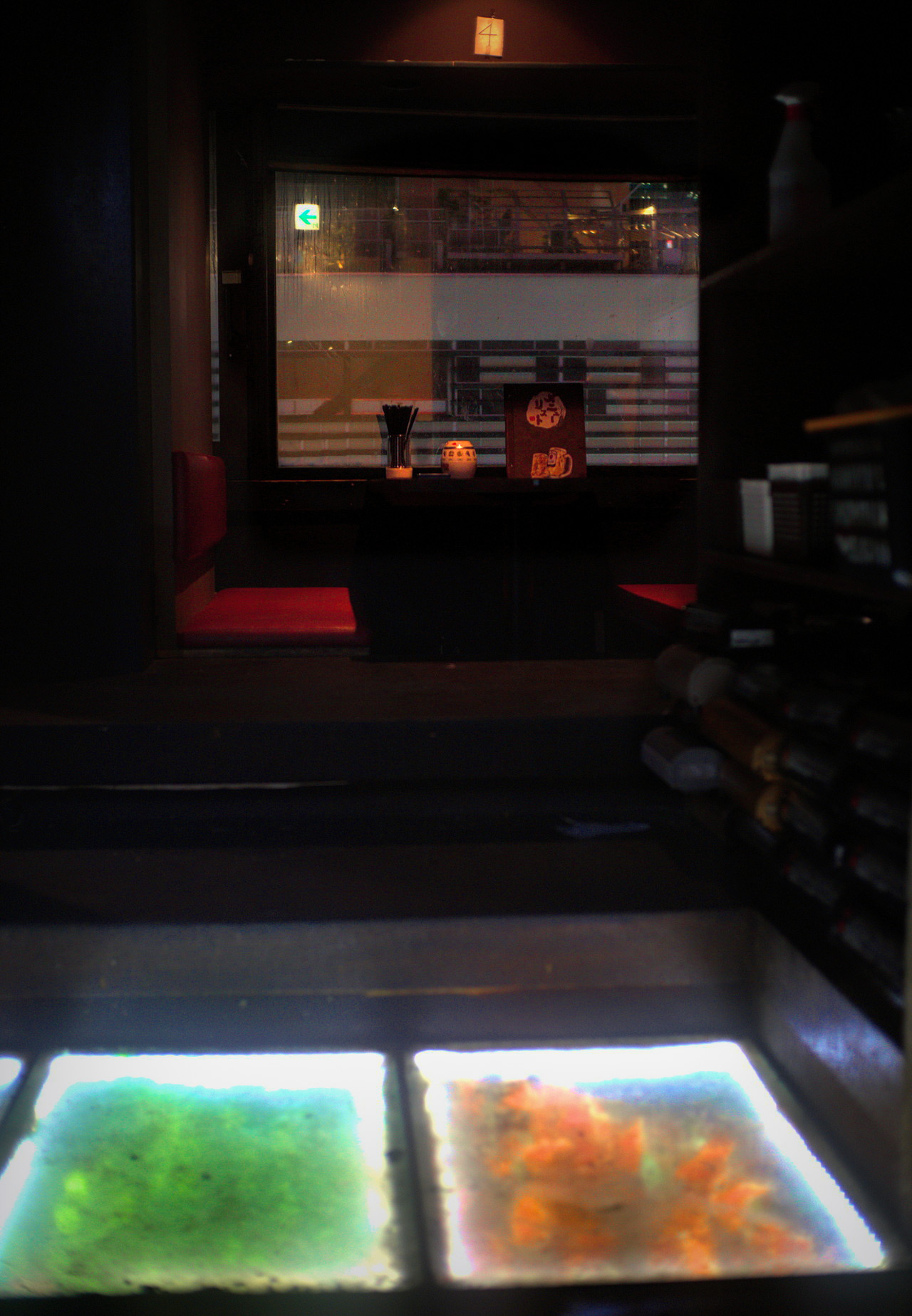
Izakayas like this one are a dime a dozen: cramped, dingey and with limited menus that would most likely disappoint any foreigner with a decent Japanese restaurant in their own home towns. Many of these establishments are owned by organised crime syndicates and feature exorbitant seating charges as part of their business model. These operations have been set up to take advantage of unaware inter-prefecture and overseas visitors. Once you eat your typically poorly prepared meal, you’ll be confronted with a bill in the hundreds of dollars. A dine and dash won’t be possible as most of these establishments are located several floors up with access via rickety, small elevators. Numerous scams like this run in Shinjuku to take advantage of the constant inflow of visitors.
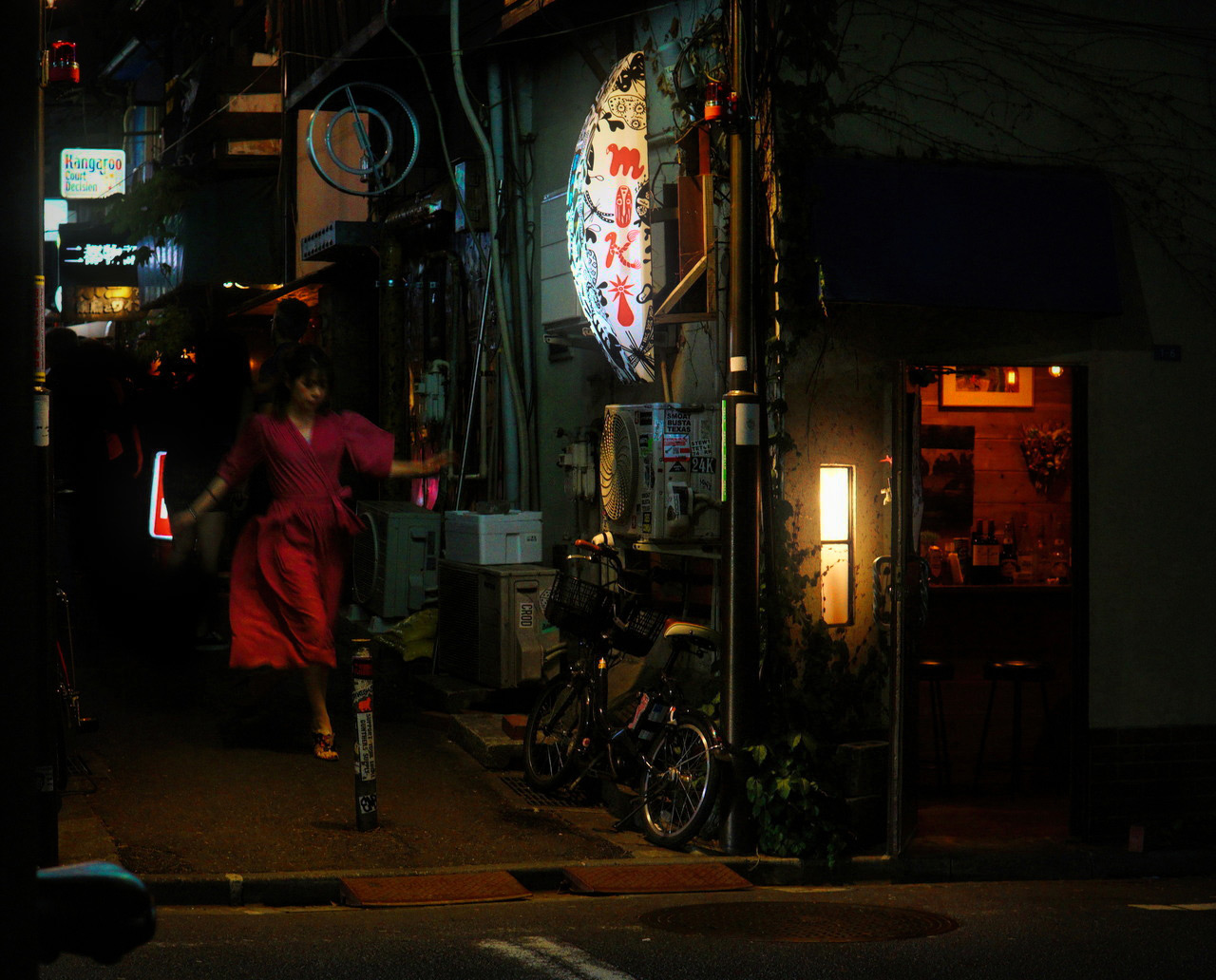
A party-goer exits the Golden Gai: a cramped network of alleyways overflowing with micro-bars in Kabukicho. Perhaps this is one of the most romantic areas of Shinjuku where a tourist will be welcomed and may participate in a somewhat authentic experience. The tight spaces and eclectic mix of foreigners, and locals interested in foreigners, provide a friendly and social hub that even the most introverted visitor should feel comfortable in.
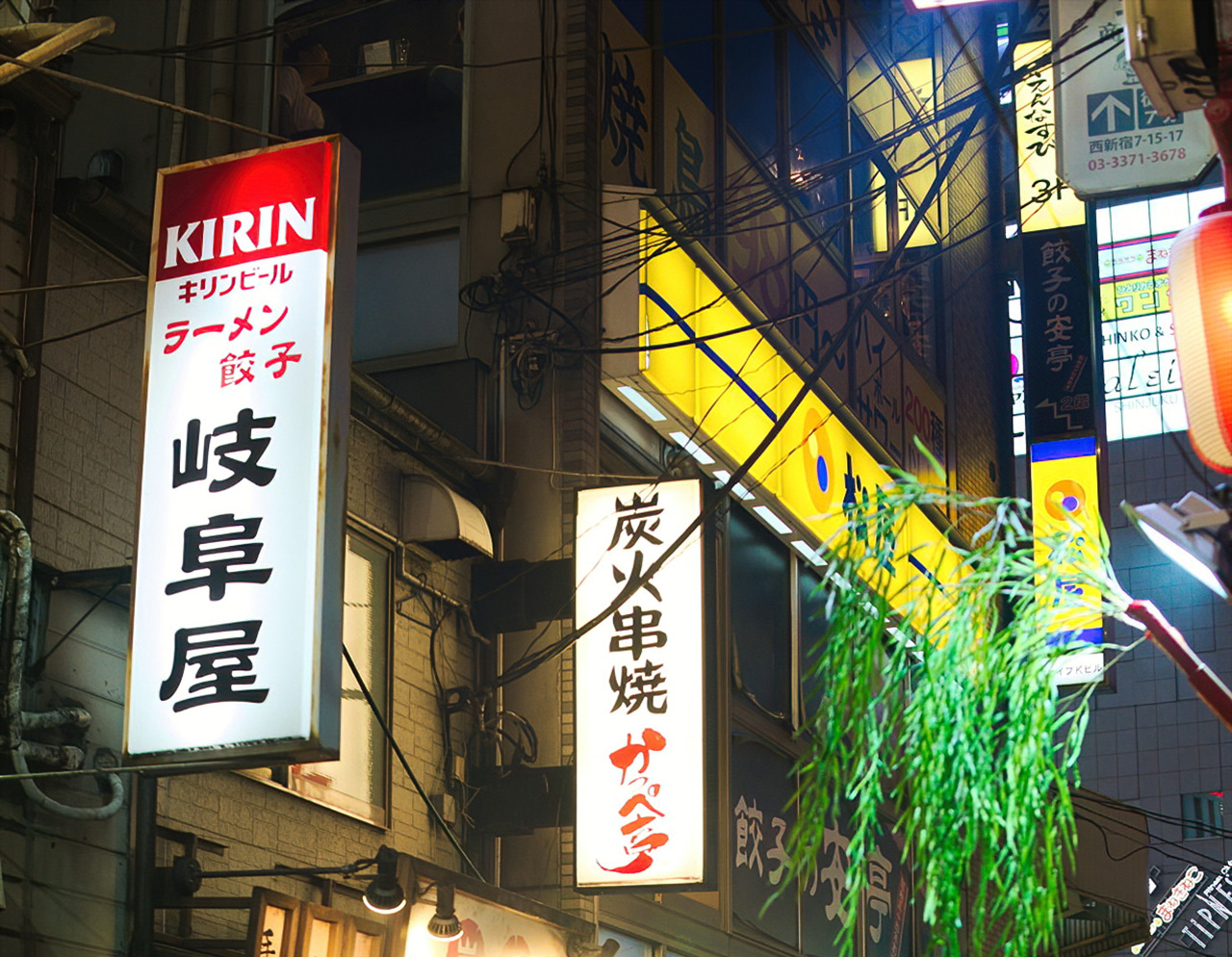
The haphazard arrangement of power lines and signage always felt like a distinctly Japanese aesthetic to me, as opposed to the more harmonious layouts preferred in cities with Chinese cultural backgrounds. Romanticized, for better or worse, by the countless movies made or set in Japan, Shinjuku has no shortage of such sights for visitors to partake in.
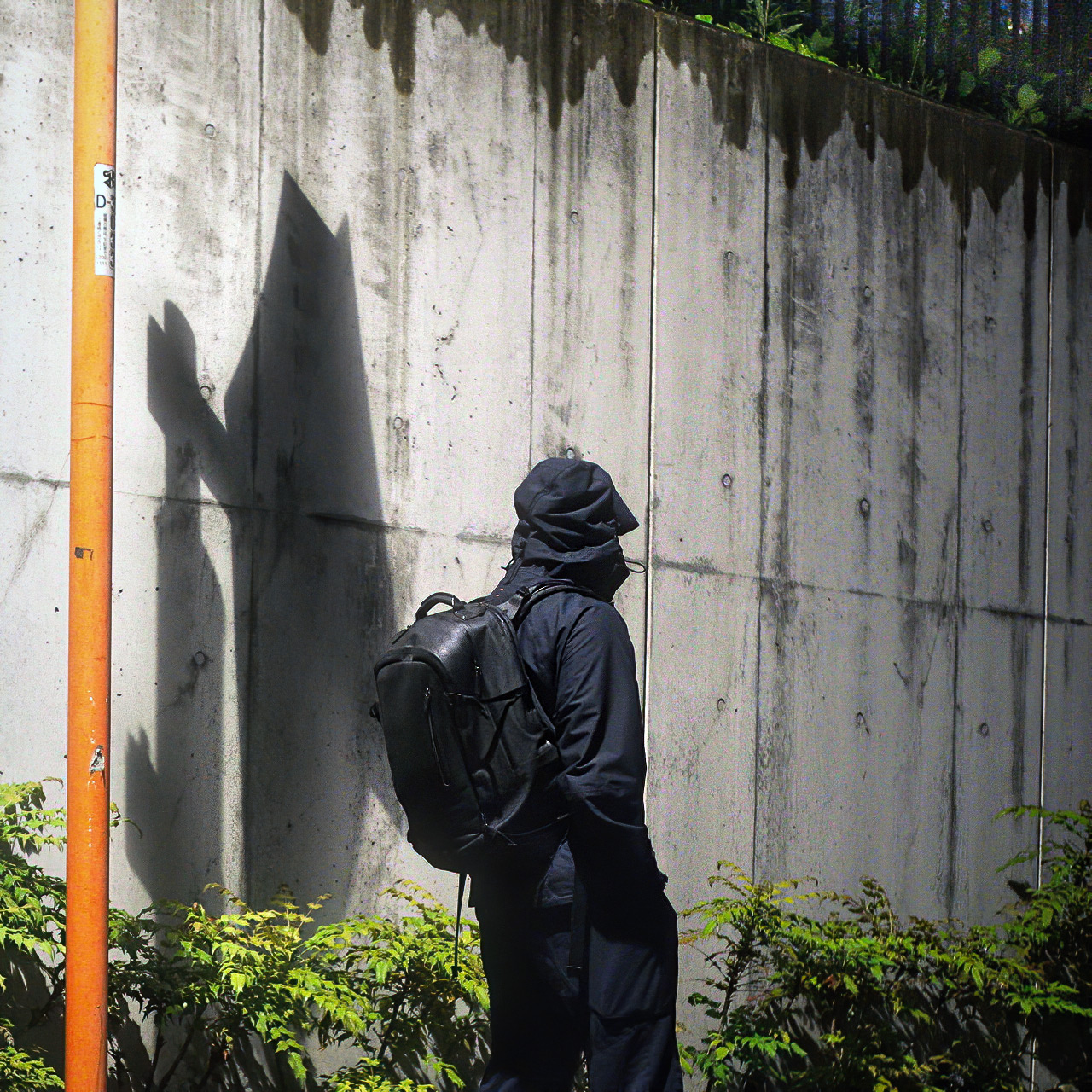
But Shinjuku is not all neon signs, pachinko parlours and izakayas. Quiet, lower income residential housing surrounds the busy CBD. A surprisingly high number of abandoned and derelict homes can be found in these neighborhoods, a symptom of Japan’s ageing population with seniors being moved to care facilities while their houses are left to rot. I enjoyed many quiet night walks in these areas, often not passing a single person past 22:00. The walks became a welcome reprieve from the increasingly tiring buzz of the main strip. And while I found many areas to enjoy, including the beautiful gardens which I’ve not included in this set, as a foreigner, Shinjuku feels like a place best enjoyed in brief jaunts. After a week, let alone the six that I stayed, the romance and novelty of the space quickly eroded. This newly revealed banality only highlighted many of the numerous issues I faced as an outsider, and that were inherent within the ward itself.
Equipment Used
If you enjoyed this article, supporting SHELLZINE by any amount can be made via the link below. Your contribution is completely optional and all funds help cover the website’s growing hosting costs and enable further original content creation without the use of advertisements. Secure payments by all major card types, including Google Pay and Apple Pay, are supported.

